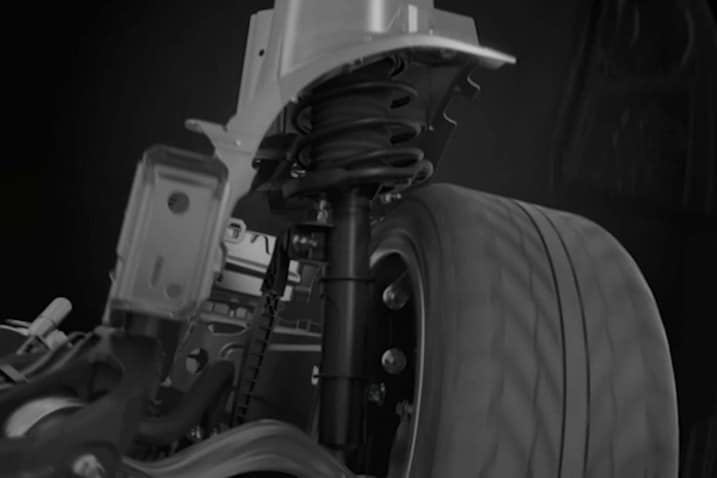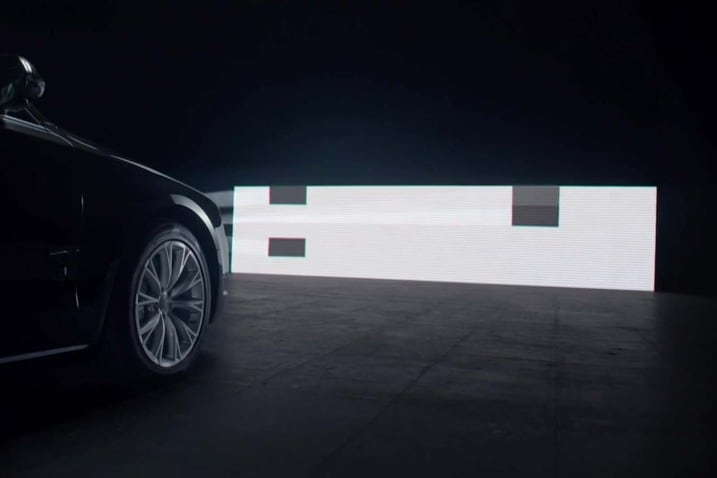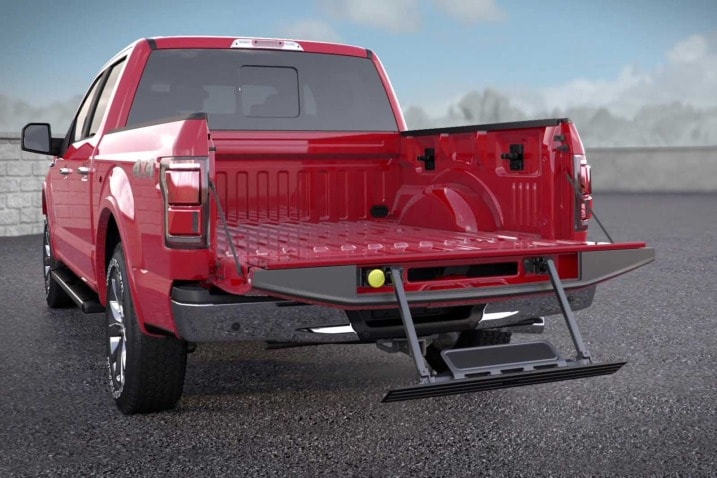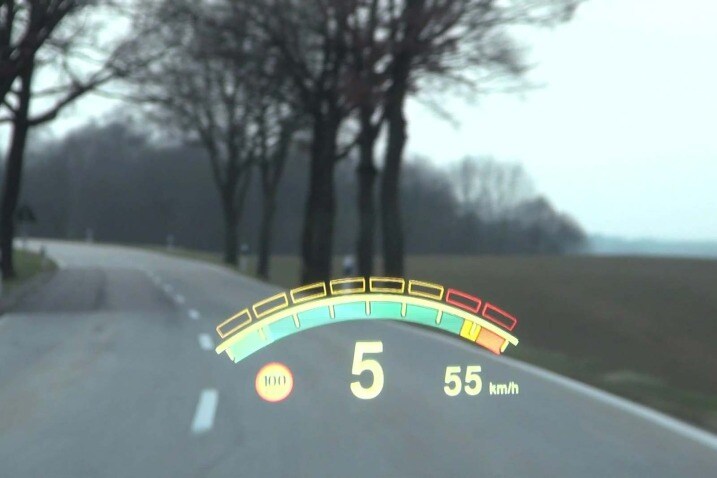Back in June we released a Car Design Trends That Need to Stop! video. In it Senior Reviews Editor Mark Takahashi highlighted 10 design trends that he finds the most irksome. As a counterpoint, we've made a list of the top 12 features Edmunds editors absolutely love.
12 Car Features We Love
Options Worth Paying For
As before, this list is in no particular order, but this time our picks aren't limited to styling and design. Instead, they include items that can also spotlight smart engineering and technological prowess.
Adaptive cruise control
Ask most people what the worst part of driving is and you'll probably hear "traffic." Bumper-to-bumper traffic is a soul-sucking exercise in patience and frustration. Thankfully, there's a feature that alleviates a lot of the tedium: adaptive cruise control.
Adaptive cruise control can maintain a set speed, just like regular cruise control does. But it also uses sensors to detect if there's a vehicle ahead. If that vehicle slows down, adaptive cruise automatically slows the car to maintain a gap that you’ve set. It'll also increase your speed (up to the max you’ve set) if the vehicle ahead speeds up. Some systems will work in stop-and-go traffic, while others may not bring the car to a complete stop.
Adaptive cruise went into development in the 1990s, with GM, Mercedes, Mitsubishi and Toyota all working on it independently. The early systems weren't all that great, with some rather excessive lurches when changing speeds. But the tech has gotten much better. Now, many systems operate as smoothly as the typical driver.
Drive a car with adaptive cruise control in heavy traffic and chances are you'll be less stressed. You might even find yourself being far more forgiving of your fellow drivers. Yes, it can be said: Adaptive cruise control can make you a better person. And now that it's available in more economical cars, perhaps it can make the world a better place.
Adaptive suspension
Adaptive suspension
Sometimes you may want a sporty suspension tuning that dials out body roll and increases cornering performance. Other times you might desire a softer, more comfortable ride. Adaptive suspensions allow for both in the same vehicle. With a touch of a button or turn of a dial, you can pick the setting that suits your particular mood.
In essence, you can switch between a ride quality that's more in line with a grand tourer or a sports car. Two for the price of one? Maybe not, but you're certainly getting a broader range of comfort and performance.
Ventilated seats
Driving for hours on end can be stifling on a hot day. It also tends to make you and your clothing look disheveled once you finally reach your destination. Ventilated seats can be a godsend in these situations. They typically have seat-imbedded fans that promote air flow through tiny holes in the seat upholstery. The flowing air wicks away moisture from your body and helps you stay cooler on long trips.
Ventilated seats are typically an optional feature, but they're no longer exclusive to luxury-branded vehicles. They're now available on many sedans, SUVs and trucks.
Matrix beam headlights
Matrix beam headlights
You may not be that familiar with matrix beam headlights because they're not yet approved for vehicles sold in the U.S. But there are rumors that they may get regulatory approval soon.
Matrix headlights use multiple LED beams to illuminate the road ahead. In typical use they appear to the driver as a broad spread of light, just like the high beams you're familiar with. But as we all know, high beams can dazzle oncoming drivers. Matrix beam heads can detect oncoming traffic and automatically dim select LED beams to avoid blinding your fellow motorists (or even pedestrians) while keeping the rest of the LED beams on.
This system is a step up from automatic high beams and has the potential to make the roads a safer place. It's more expensive and typically reserved for luxury cars. But just as with any new technology, it'll get more affordable and widespread at some point.
Wireless phone integration
Your smartphone is great but using it while driving isn't. Texting, calling or using an app while behind the wheel are significant causes for driver distraction. The Apple CarPlay and Android Auto integration systems can help minimize this distraction by projecting many of your phone's apps right on your vehicle's touchscreen and giving you greater access to voice controls.
These systems have been around for about five years. And now wireless versions of CarPlay and Android Auto are becoming more common. That means you don't have to plug in your phone with a USB cord to make them work.
"Don't I still need a cord to charge my phone?" you might ask. That's where wireless device charging comes in. You just drop your compatible phone on the charging pad and go. Most systems will also remind you to take the phone with you after you park. Wireless charging pads are also evolving. Audi has a signal booster built into some pads, and the Kia K5's has a built-in cooling vent.
Configurable cargo areas
We pay a lot of attention to cargo capacity, especially for family-oriented vehicles. But just as important is how versatile that space can be.
One of the best examples is in the Volvo XC40. You can section off the floor of the cargo area to better hold smaller items. That means you can have all of your grocery bags behind a partition hanging from built-in hooks. If you're parked uphill, you won't have to chase down an errant orange or cantaloupe when you open the liftgate.
The Lincoln Navigator is another example. It has a removable shelf above the cargo floor. It's positioned in such a way that it allows you to access items on it by just flipping up the liftgate's glass section rather than opening up the whole liftgate.
Multifunction tailgates
Multifunction tailgates
The latest pickups have some cool tailgate designs. A few years back, for instance, Ford introduced a drop-down step to the F-Series trucks, which makes it a lot easier to get into a truck's bed. Honda's also in the game with its Ridgeline tailgate. You can open it by dropping it down the conventional way or by swinging it out.
General Motors has also developed a multifunction tailgate for the GMC Sierra. The Sierra's has a step function plus other features to help you access or load cargo. Ram has one too. You can drop it down like a regular tailgate or swing it out in two pieces, barn-door style.
Reverse tow assist
Backing a trailer into a parking spot or down a launch ramp is tricky and can significantly raise the anxiety levels of many drivers. While more seasoned drivers with plenty of towing experience will be quick to offer all sorts of tips and advice, most will discover that it just takes time and patience to master.
That's why we love reverse tow assist. It's not particularly new, but it works perfectly. With the Ford system we tested, you just stick some positioning stickers to the tow arm of the trailer, set up the system and go. You steer with the dash-mounted knob while the actual steering wheel spins madly to maneuver the trailer right where you want it.
Head-up displays
Head-up displays
Head-up displays (HUDs) were developed to help pilots see essential information without having to look down at the instruments. The HUDs in cars are less sophisticated but are equally adept at information delivery. They typically display basic info such as speed, and more advanced versions can show turn-by-turn navigation and audio information.
Most HUDs reflect the image into the windshield. Some less expensive alternatives employ a plastic flip-up screen. Head-up displays benefit both safety and convenience by reducing distraction and placing needed information right in front of the driver.
Smart inflate
One of the easiest things you can do to ensure the safety of your vehicle is to keep
its tires properly inflated. Unfortunately, it can be a pain sometimes. Do you have a tire gauge? Is the one at the gas station filler accurate?
Nissan introduced a clever feature a few years ago that uses systems already built into the car. As you're filling up a tire with air, the car will softly beep its horn to let you know when you've filled the tire to the correct pressure. A few other carmakers have followed suit.
It's neat to see the repurposing of existing tech to create a new feature. It proves that smart engineering doesn't necessarily mean more complications.
Sport exhaust modes
We love the sound of a rumbly V8 and the shriek of a V12, but sometimes we'd rather fly under the radar. Sport exhaust modes have not only made our lives better but also our neighbors'.
You'd probably prefer not to shock the entire block awake with a 5-liter explosion of fuel and fury in the predawn hours. The quiet start mode in some Ford Mustangs and other vehicles solve that problem. Automakers even made it smarter by allowing you to set a time range for the quiet start, just in case you forget.
Once you're out of earshot of anyone who knows you, hit the exhaust button and enjoy that glorious howl.
Thigh extenders
Here's one for taller drivers. Having a good amount of thigh support helps with overall comfort and reduces fatigue over long distances. BMW was early on the scene with thigh extension on the seat cushions, allowing short and tall drivers alike to find a position that best suits them.
Some extenders are manual; some have power adjustments. Most vehicles don't offer them at all. If this is a problem for you, definitely pay attention to this feature on your next test drive.






 by
by